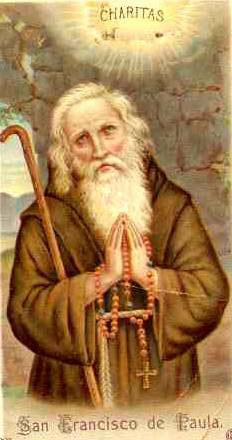Catholic University of Ireland
FREE Catholic Classes
The project of a Catholic University for Ireland was launched at the Synod of Thurles in 1850. To revive true learning was essential for the well-being of Irish Catholics ; the suggestion of Pius IX and the example of Louvain were inspiring; and, above all, it was necessary to provide a seat of higher education on Catholic lines for lay students who kept away from the condemned Queen's Colleges, where religion had no official or collegiate recognition and the governing and academic bodies, as regards Cork and Galway, were foreign to the religious convictions of the people they were intended to educate. The Holy See gave approval in 1852; liberal contributions poured in, and property was acquired in Dublin for university purposes. The bishops had secured John Henry Newman as rector for a short term of years. At their meeting in May, 1854, the hierarchy gave solemn effect to the papal letters regarding the erection of the university. On the Feast of Pentecost following Dr. Newman took the oath of office at a function in the metropolitan church, where Archbishop Cullen delivered an address. Statutes, framed for the government of the university, were sanctioned by the Holy See ; papal authority was granted to confer degrees; and in November of the same year the work of the university began. The Irish hierarchy, acting through a committee, constituted the supreme governing body. Among its authorities the senate was the body representative of the university ; and the rectorial council was the rector's ordinary adviser. The university had five faculties, viz.-theology, law, medicine, philosophy and letters, science. Newman was careful to secure the services of various distinguished men as professors and lecturers. The first appointments to professorial chairs comprised the names of Edmund O'Reilly, S.J., Dr. P. Leahy, Eugene O'Curry, T.W. Allies, and D.F. McCarthy; and gradually a considerable number of students, including some in high rank, from different European countries, began to frequent the halls of the new university. But the institution itself and its students laboured under the greatest disadvantages. The university had no charter from the State to confer degrees, nor were its lectures recognized elsewhere in Ireland as leading to a degree. It had to depend entirely on voluntary contributions for its revenue. In the immediate issue these obstacles were not to be adequately surmounted even by the fame and genius of Newman, the eminence of the professors, the devoted loyalty of Irish students, and the constant efforts of the bishops. But the determination of Irish Catholics produced highly important results. The Government, confronted with their standing protest, after a time deemed it expedient to attempt to deal with their grievance in the matter of university education. The Liberal plan of a Supplemental Charter, incorporating the Catholic University as a college, not as a university, and enabling the students educated in its halls to obtain degrees from an enlarged Queen's University, failed in 1866; the Conservative scheme of chartering an unendowed Catholic university was announced, considered, and abruptly withdrawn in 1868; Mr. Gladstone's proposal of one Irish university, comprising Catholic and other colleges without public endowment as well as Trinity College and two of the Queen's Colleges with their endowments continued, was defeated in 1873 by an adverse majority of three votes in the House of Commons. But in 1879, on the second reading of a University Bill introduced by the O'Connor Don, the Beaconsfield administration announced that they would themselves introduce a University Bill for Ireland ; and the promised Bill became an Act of Parliament in that year. It abolished the Queen's University, while sparing its colleges, and set up in its place the Royal University of Ireland, an examining body entitled to give degrees to all comes on condition of passing the prescribed examinations, and to award prizes for distinguished answering. Moreover, an arrangement was made to provide a small indirect endowment to help the work of the Catholic University through fellowships to be held by a certain number of its professors.
It was for the purpose of arranging the Catholic colleges of higher education in an associated group, to stand against the endowed Queen's Colleges in the competition of the Royal University, that the framework of the Catholic University was considerably modified in 1882. In that year the teaching institution in St. Stephen's Green became University College and the Catholic University, of which Maynooth since 1876 had been constituted a college, was made to embrace an association of colleges, each retaining its own independent collegiate organization. The success of the Catholic colleges cleared the way for Mr. Birrell's University Act in 1909. University College, under the management of the Jesuits from 1883, gave a fine lead in conjunction with the Catholic University School of Medicine. This school, which in 1892 was placed under a governing body of its own, had been founded by the bishops in 1855 in Cecilia St., Dublin, and, unendowed though it was, had been a success from the start, owing to the advantage it enjoyed, in that its teaching was recognized as qualifying a student to stand the examinations for a license to practise. It now merges, like University College, in the new University College, Dublin, which is the leading constituent college of the National University established in 1909. This constituent college has utilized the buildings of the Catholic University. The Catholic University church, built by Dr. Newman, has been made available by the bishops for the catholic members of the National University; but the Catholic University itself still exists, as was affirmed in an important judicial decision by the Master of the Rolls in 1911.
Dr. Newman, who retired in 1858, was succeeded in the rectorial Chair by Dr. Woodlock, Dr. Neville, Dr. Molloy, and Dr. O'Donnell. It is said that £250,000, subscribed mainly in Ireland and America, was collected and expended upon the university. After providing buildings and equipment, that sum would allow little over £8000 a year during the quarter of a century that elapsed before the fellowships of the Royal University were made available. The ideals sustained and the reformed achieved in higher education amply justify the effort. Archbishop Walsh and John Dillon were its students; the "Atlantis" and O'Curry's Lectures were its products. Even in its last years it had among its professors such men as Aubrey De Vere, Dr. Casey, George Sigerson, Dr. Molloy, James Stewart, and Robert Ornsby.
Join the Movement
When you sign up below, you don't just join an email list - you're joining an entire movement for Free world class Catholic education.

-

- Stations of the Cross
- Easter / Lent
- 5 Lenten Prayers
- Ash Wednesday
- Living Lent
- 7 Morning Prayers
- Mysteries of the Rosary
- Litany of the Bl. Virgin Mary
- Popular Saints
- Popular Prayers
- Female Saints
- Saint Feast Days by Month
- Pray the Rosary
Pope Francis’ April Prayer Intention: Using Technology to Strengthen Human Connections
Finding Peace Through Prayer in a World of Worry
Trump Administration Withholds Federal Grants from Planned Parenthood Over DEI and Civil Rights Concerns
Daily Catholic
 Daily Readings for Wednesday, April 02, 2025
Daily Readings for Wednesday, April 02, 2025 St. Francis of Paola: Saint of the Day for Wednesday, April 02, 2025
St. Francis of Paola: Saint of the Day for Wednesday, April 02, 2025 Prayer for God's Help in Daily Actions: Prayer of the Day for Friday, March 14, 2025
Prayer for God's Help in Daily Actions: Prayer of the Day for Friday, March 14, 2025 Daily Readings for Tuesday, April 01, 2025
Daily Readings for Tuesday, April 01, 2025 St. Hugh of Grenoble: Saint of the Day for Tuesday, April 01, 2025
St. Hugh of Grenoble: Saint of the Day for Tuesday, April 01, 2025- To Perceive Animals as God's Gifts: Prayer of the Day for Thursday, March 13, 2025
![]()
Copyright 2025 Catholic Online. All materials contained on this site, whether written, audible or visual are the exclusive property of Catholic Online and are protected under U.S. and International copyright laws, © Copyright 2025 Catholic Online. Any unauthorized use, without prior written consent of Catholic Online is strictly forbidden and prohibited.
Catholic Online is a Project of Your Catholic Voice Foundation, a Not-for-Profit Corporation. Your Catholic Voice Foundation has been granted a recognition of tax exemption under Section 501(c)(3) of the Internal Revenue Code. Federal Tax Identification Number: 81-0596847. Your gift is tax-deductible as allowed by law.


 Daily Readings for Wednesday, April 02, 2025
Daily Readings for Wednesday, April 02, 2025 St. Francis of Paola: Saint of the Day for Wednesday, April 02, 2025
St. Francis of Paola: Saint of the Day for Wednesday, April 02, 2025 Prayer for God's Help in Daily Actions: Prayer of the Day for Friday, March 14, 2025
Prayer for God's Help in Daily Actions: Prayer of the Day for Friday, March 14, 2025 St. Hugh of Grenoble: Saint of the Day for Tuesday, April 01, 2025
St. Hugh of Grenoble: Saint of the Day for Tuesday, April 01, 2025

